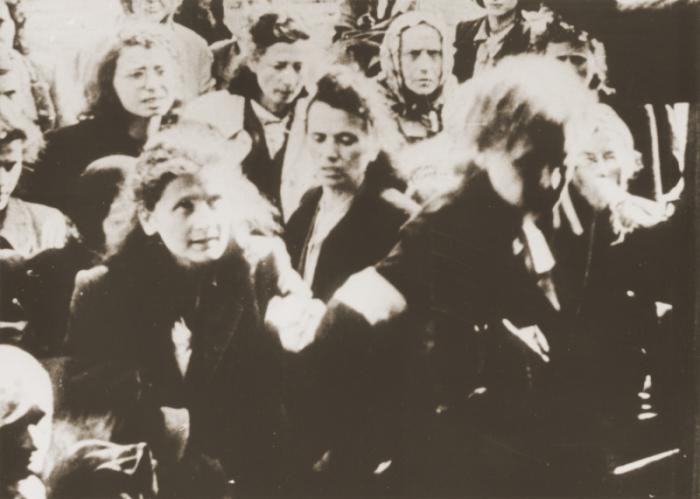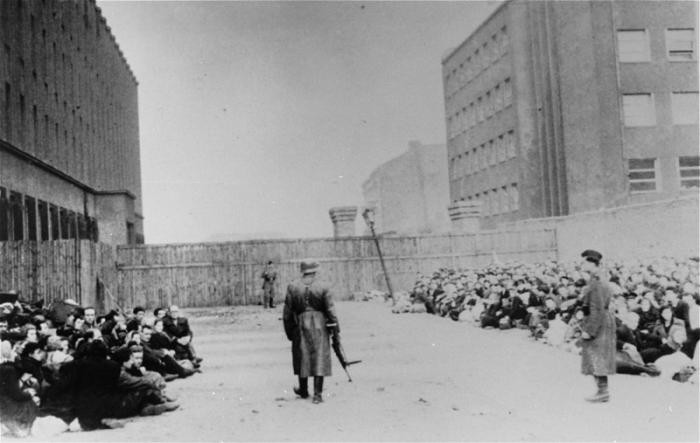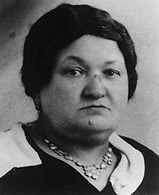
Deportations to and from the Warsaw Ghetto
In the fall of 1940, German authorities forced hundreds of thousands of Jews into the Warsaw ghetto. At its height, more than 400,000 Jewish people lived in the ghetto. There, the Germans subjected them to horrendous and worsening conditions. By May 1943, the German authorities had deported more than 275,000 Jewish people to their deaths in the Treblinka killing center. They also deported tens of thousands more to concentration camps.
Key Facts
-
1
In the fall of 1940, German authorities forced the Jews of Warsaw to move into a ghetto. A few months later, in January 1941, German authorities began deporting Jews from German-occupied areas of Poland to the Warsaw ghetto.
-
2
In July 1942, German authorities began deporting Jews from the Warsaw ghetto to the Treblinka killing center to be murdered.
-
3
In April 1943, those Jews still living in the Warsaw ghetto began an uprising. German authorities and their auxiliaries responded with extreme brutality. They destroyed the Warsaw ghetto in May 1943.
Deportations to the Warsaw Ghetto
Between January and March 1941, Jews from smaller communities to the west of Warsaw were deported to the Warsaw ghetto. Between April and July 1942, Jews from the nearby towns east of Warsaw, from Germany, and from German-occupied areas of western Poland were deported there. The Germans also deported several hundred Roma (Gypsies) to the Warsaw ghetto.
At its height, the total population of the Warsaw ghetto exceeded 400,000 people. Miserable conditions in the ghetto, deliberately exacerbated by German policies, worsened over time.
Deportations from the Warsaw Ghetto
Between July and September 1942, German SS and police units, supported by non-German auxiliaries, deported about 265,000 Jews from the Warsaw ghetto to their deaths in the Treblinka killing center. German SS and police personnel used violence to force Jews to march from their homes or places of work to the Umschlagplatz (concentration point). From there, they forced the Jews to board freight cars bound for Małkinia, on the Warsaw-Białystok rail line. When the trains arrived in Małkinia, they were diverted along a special rail spur to Treblinka.

The Germans demanded that members of the Jewish council (Judenrat) assist in organizing the deportations. The head of the Jewish council in Warsaw, Adam Czerniaków, refused to cooperate. Although Czerniaków did not call for resistance to the Germans, he refused to pass on the deportation order and committed suicide on July 23, 1942, by swallowing a cyanide capsule.

Generally, the Germans and their auxiliaries rounded up Jews by cordoning off a city block and systematically forcing the residents out onto the street. They then forced the Jews to march to the Umschlagplatz under heavy guard. As soon as one block was cleared, German SS and police units and their auxiliaries would secure the next block and repeat the process. German SS and police personnel viciously beat and tortured Jews to make them move more quickly; they shot those who were unable or unwilling to move. To lure Jews out of hiding, the German authorities often resorted to announcements that the deportations were over and those who had not been deported would receive food. Starving and unaware that they would be transported to their deaths, some Jews reported and they too were deported to Treblinka. Toward the end of the deportations, German forces and collaborators systematically searched the then empty apartment houses and workplaces to find Jews in hiding.
In September 1942, as many as 60,000 Jews remained in the ghetto. In January 1943, German SS and police units deported roughly 5,000 Jewish residents of the Warsaw ghetto to Treblinka. During this three-day operation, 1,171 Jewish ghetto residents were shot and killed.
Between April 19 and May 16, 1943, German SS and police forces, supported by a battalion of specially trained auxiliary police guards from the Trawniki training camp, liquidated the Warsaw ghetto. When Jewish inhabitants resisted the initial deportation efforts (in what became known as the Warsaw ghetto uprising), the SS and police were caught by surprise and sustained dozens of casualties. The Germans then destroyed the ghetto block by block in order to break the resistance. More than 7,000 Jews, most of them resistance fighters or persons hidden inside the ghetto, were killed during the operation. Most of them were shot in combat with the SS and German police. The Germans deported about 7,000 more Jews to Treblinka, and about 42,000 to concentration camps and forced-labor camps in the Lublin District of the Generalgouvernement. Of this group, approximately 18,000 Jews were sent to the Majdanek camp, about 16,000 to the Poniatowa forced-labor camp, and some 6,000 to the Trawniki forced-labor camp. The remaining 2,000 were dispersed among smaller forced-labor camps such as Budzyn and Krasnik.
After the destruction of the ghetto, SS authorities established a small concentration camp on the site of the Warsaw ghetto.
Critical Thinking Questions
What pressures and motivations influenced the choices made by Jews and community leaders as conditions declined and deportations increased?
What percentage of rail traffic during World War II was used for deportations?
What level of organization and administration is required to move, murder, and dispose of millions of people? What other tasks are required before the victims are murdered? Who filled these roles?
How did deception of the victims play a role?
Learn about the lives of the Jews in the community of Warsaw before 1939.

